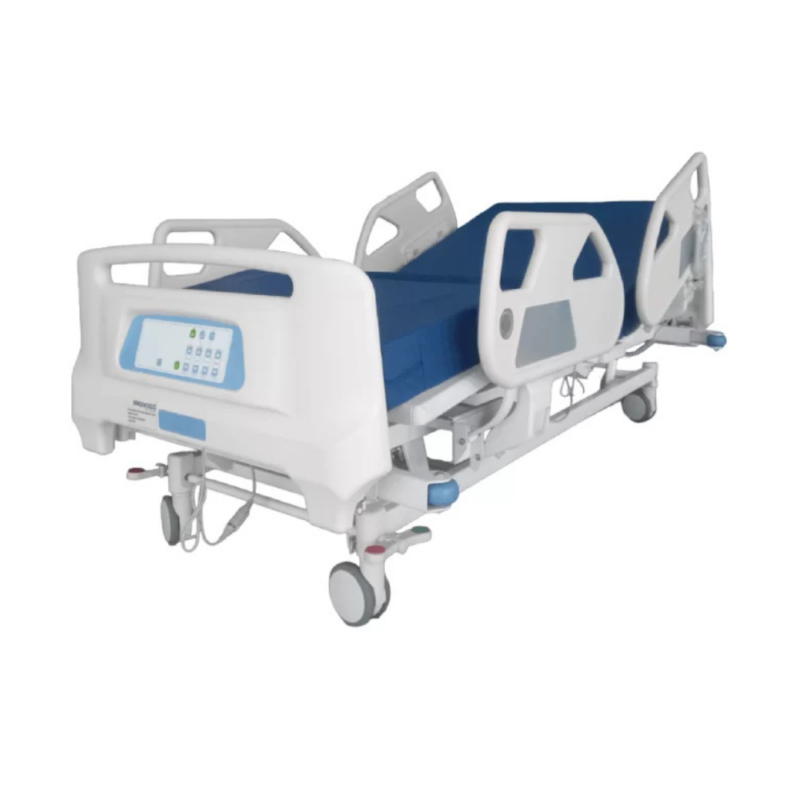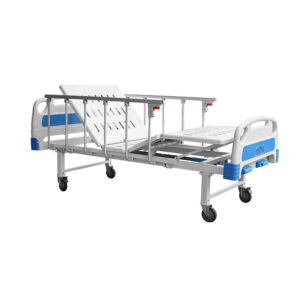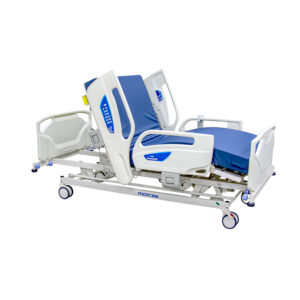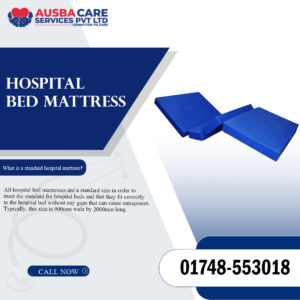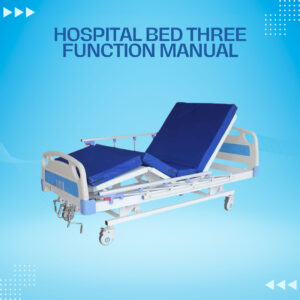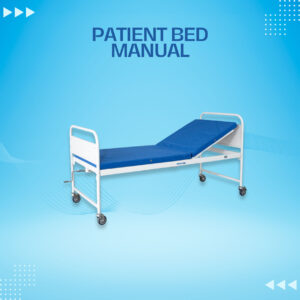Description
Electric Hospital Bed: Five-Function Overview, Benefits, and Buying Guide
Electric hospital beds have revolutionized patient care, offering enhanced comfort, mobility support, and safety. Among the different types available, five-function electric hospital beds are considered one of the most advanced and versatile options. These beds are designed not only for hospitals but also for nursing homes, rehabilitation centers, and even home healthcare settings.
In this article, we will explore what a five-function electric hospital bed is, its key features, benefits, and important factors to consider when buying one.
What is a Five-Function Electric Hospital Bed?
A five-function electric hospital bed is a motorized bed equipped with five adjustable positions, all controlled via a remote or control panel. These beds provide medical caregivers and patients the flexibility to position the bed for various therapeutic and comfort needs.
The five standard functions are:
-
Backrest (Head) Elevation
Allows the upper body to be raised. Ideal for patients who need support while sitting up, eating, or watching TV. -
Leg Elevation (Knee Adjustment)
Elevates the knees, helping with circulation and reducing pressure on the lower back. -
Height Adjustment (Hi-Lo)
Raises or lowers the entire bed to make patient transfer easier and to reduce caregiver strain. -
Trendelenburg Position
Tilts the bed so the patient’s head is lower than the feet. Used in certain medical emergencies and post-surgical recovery. -
Reverse Trendelenburg Position
Tilts the bed so the patient’s feet are lower than the head. Beneficial for improving respiratory function and aiding certain surgeries.
Key Features of Five-Function Electric Beds
1. Electric Control System
Each function is powered by silent and smooth electric actuators. A user-friendly remote or nurse control panel allows easy adjustments.
2. Sturdy Frame
The bed frame is often made from high-quality powder-coated steel or aluminum, ensuring durability and safety.
3. Safety Side Rails
Side rails are typically foldable and lockable, preventing falls and assisting with patient mobility.
4. Wheels with Locking Mechanism
Heavy-duty caster wheels allow easy movement of the bed and lock securely when needed.
5. ABS Head and Foot Boards
Detachable for emergency CPR or patient access, made of antibacterial and easy-to-clean ABS plastic.
6. Battery Backup
Some advanced models come with battery backup systems to ensure bed operation during power outages.
Benefits of Using a Five-Function Electric Bed
1. Enhanced Patient Comfort
The multiple adjustment options help reduce bed sores, improve blood circulation, and support proper body alignment, leading to greater overall comfort.
2. Improved Medical Outcomes
Positions like Trendelenburg and Reverse Trendelenburg are essential for certain medical conditions and surgeries, aiding in faster recovery and better outcomes.
3. Ease of Use for Caregivers
Height adjustment and remote controls reduce physical strain on nurses and caregivers, improving efficiency and safety.
4. Mobility Support
Patients with limited mobility can reposition themselves more easily, promoting independence and dignity.
5. Emergency Response
Quick adjustments can be made during emergencies or sudden medical needs, ensuring timely and effective interventions.
Who Needs a Five-Function Hospital Bed?
-
Post-surgical patients requiring specific positions for healing
-
Elderly individuals with chronic conditions or limited mobility
-
ICU patients requiring constant repositioning
-
Home care patients needing daily medical assistance
-
Rehabilitation centers for patients recovering from injuries or surgeries
Comparison with Other Hospital Beds
| Feature | Three-Function Bed | Five-Function Bed |
|---|---|---|
| Backrest Adjustment | ✅ | ✅ |
| Leg Adjustment | ✅ | ✅ |
| Height Adjustment | ✅ | ✅ |
| Trendelenburg Position | ❌ | ✅ |
| Reverse Trendelenburg | ❌ | ✅ |
| Suitable for ICU/Home | Moderate | Highly Suitable |
Factors to Consider When Buying a Five-Function Bed
1. Motor Quality
Look for beds with low-noise, high-efficiency motors that are CE or FDA certified.
2. Weight Capacity
Standard beds support up to 250–300 kg. For bariatric patients, choose beds with higher capacity.
3. Mattress Compatibility
Ensure the mattress is suitable for adjustable positions and provides pressure relief.
4. Size & Space
Measure room space and confirm bed dimensions, especially for home use.
5. Warranty & Support
Reputable brands offer 1–5 years warranty and after-sales service, which is essential for long-term use.
Top Use Cases in Hospitals
-
ICU/CCU Departments:
Where quick adjustments and emergency positioning are routine. -
Orthopedic Units:
Beneficial for patients with spinal injuries or fractures. -
Neurology Wards:
Used for patients with neurological deficits who require frequent posture changes.
Common Accessories and Add-ons
-
Over-bed table
-
IV pole and drainage bag holders
-
Mattress with waterproof and anti-decubitus features
-
Central locking wheels
-
CPR release system
Maintenance and Safety Tips
-
Regularly inspect motors and wiring for wear or damage.
-
Clean surfaces with non-abrasive, disinfectant wipes.
-
Train users or caregivers on proper operation.
-
Ensure bed is on a level surface before use.
-
Lock wheels during patient transfer or when stationary.
Conclusion
A five-function electric hospital bed is more than just a piece of equipment—it is a crucial tool in ensuring patient recovery, comfort, and caregiver efficiency. While the initial investment may be higher than manual or three-function beds, the long-term benefits, both clinical and practical, make it an excellent choice for hospitals, clinics, and home healthcare providers.
Whether you are a healthcare facility administrator or a family caregiver, investing in the right bed can dramatically improve the quality of life for the patient and simplify care routines.

